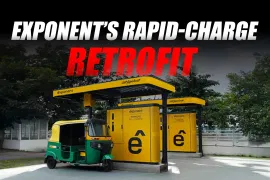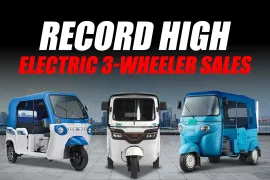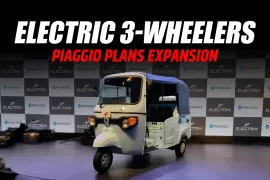The Bajaj RE has kept its presence running on Indian roads for nearly half a century. From its introduction in 1977 as a compact mode of mobility, it evolved into an essential entity in cities, towns and small markets. The year 2025, thus, sees it still chugging along, ferrying passengers, goods and daily routines.
Legacy Built on Simplicity
Bajaj designed the RE three wheeler as an answer to the need for affordable means of short-distance transport. The design remained simple: a strong body, a small engine and a light frame, qualities making it easy to maintain, easy to drive and suitable for crowded areas.
Over the years, Bajaj adapted the RE to meet new standards. Early petrol variants went on to serve smaller towns, while the later Bajaj RE BS6 and CNG models met modern emission standards. Even with the new models of mobility penetrating the market, the RE remained an entity that is reliable, utilitarian and affordable.
Engine and Specifications
Presently, the Bajaj RE Passenger Auto comes with options across Petrol, Diesel, CNG and LPG. Each type serves a different purpose for a different operational need.
- Engine Capacity: 198.88cc (Petrol/CNG/LPG), 470.5cc (Diesel)
- Maximum Power: Up to 9.5 PS
- Transmission: 4-speed manual gearbox
- Fuel Tank: 8–10 litres, depending on model
- Seating Capacity: Driver + 3 passengers
The Bajaj RE BS6 uses electronic fuel injection for better combustion. This cuts down on emissions and improves throttle response. It gives steady power for stop-and-go driving — typical of Indian traffic.

Mileage and Day-to-Day Usage
Fuel economy defines the RE's reputation. On average, the Bajaj RE mileage goes up to 35-45 km/kg for CNG and 35-40 km/l for petrol, as per load and road conditions. The light frame reduces strain on the engine, helping in both mileage and maintenance.
For drivers, this translates to lower operating costs and steady daily earnings. Its small turning radius and compact design make it perfectly suitable for dense traffic. Though not particularly fast, it remains dependable during continuous city operations.
Structure and Functional Design
The Bajaj RE auto rickshaw is a careful integration of form and function. The cabin is small but laid out sensibly. The driver sits up high and can see the road ahead clearly. The passengers sit behind the driver and, while the leg space is just ok, the cushioning is adequate and reasonable.
Several features of the Bajaj RE include:
- Metal body for strength and longevity
- Wide windscreen, single wiper
- Simplified controls and application
- The parts are readily available in local markets
- Stable ride with simple suspension
The design is practical, nothing is overdone. Everything has a direct purpose; to support comfort, visibility or durability.
CNG and LPG – Towards Cleaner Travel
The Bajaj RE CNG auto provides a transitional route toward cleaner mobility in cities. It should help reduce running costs and lessen emissions, as compared with its equivalent petrol or diesel versions. For intra-city drivers facing restrictions on the use of certain fuels, CNG and LPG variants remain the more convenient and accepted options.
BS6 engines help meet air quality norms without making vehicles expensive or complicated. This approach fits regions where electric vehicles are still in their relative infancy.
Price and Accessibility
The Bajaj RE price in India depends on variant and location. As of 2025, the Bajaj RE on-road price ranges between ₹2.60 lakh and ₹3.10 lakh. The low initial cost and easy maintenance make it viable for small fleet owners and individual drivers. Due to its simple engineering, long-term maintenance remains reasonable. Mechanics all over India are familiar with its structure; therefore, this reduces downtime and the repair costs remain predictable.
Still Relevant in 2025
After 48 years, the Bajaj RE three wheeler remains an active part of India's transport system. It connects streets where buses just cannot enter and carries passengers where larger vehicles prove uneconomical. With new electric and hybrid models arriving in the marketplace, it is through familiarity and functionality that the RE holds its own. For many, it's not just an old design but a tested one: still useful, still profitable and still essential in day-to-day travel.
For more articles and news, stay updated with 91trucks. Subscribe to our YouTube channel and follow us on Facebook, Instagram and LinkedIn for the latest videos and updates from the automotive world!
Also Read:
How TVS Auto Is Repositioning Itself in the Electric 3W Market
Mahindra, Bajaj, TVS Lead the Charge as Electric 3-Wheeler Sales Hit Record High in October
Web Stories
Latest Three Wheelers News
Categories
91trucks is a rapidly growing digital platform that offers the latest updates and comprehensive information about the commercial vehicle industry.









